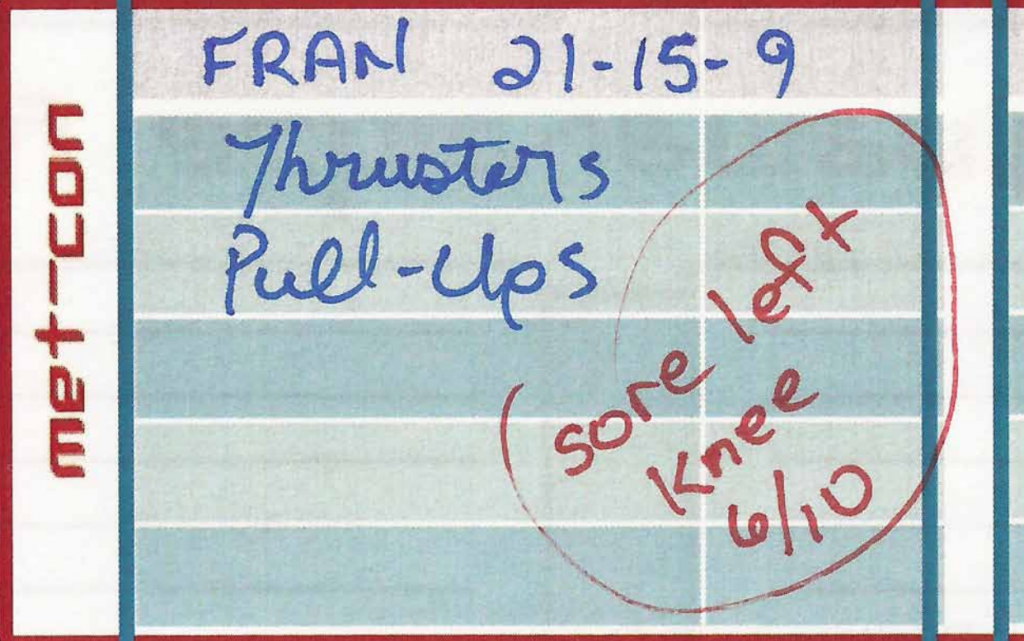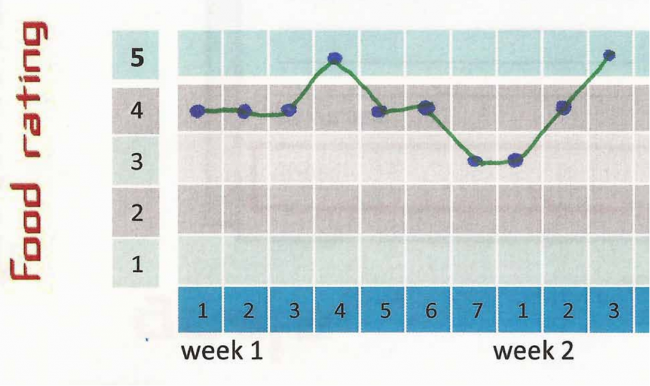|
Although it might not be as fun or sexy as a 200kg deadlift or a two-minute Fran, taking time to log workout details can go a long way in helping you become a better CrossFitter. We all inherently understand the benefits of keeping a training log. However, many of us are either not maintaining one or simply going through the motions by scribbling our WOD times in a notebook or spreadsheet. A well-maintained training log can provide a wealth of historical data. It can contribute valuable clues about what might have precipitated an injury or what little things you might have done differently the last time you were setting PRs at a feverish pace. What follows are just a few powerful reasons to take the extra time to keep a purposeful training log and some tips to get the most out of using one. Injury Diagnosis and Treatment The most pragmatic reason for keeping a detailed training log is to identify the root cause of a particular injury. While acute injuries leave little doubt as to their cause, most injuries happen over time and are an accumulation of many different types of stressors. These chronic injuries also happen to be the most difficult to diagnose, as well as the most troublesome from which to recover. Imagine for a moment visiting your physician or therapist with a detailed history of things like specific increases in your training volume, stretching and mobility practices, how much you have added to your squat, and notes on days when a specific movement bothered you. How much more helpful to diagnosis and subsequent recovery would this be than simply telling him or her, “My knee hurts”? As you progress toward recovery, the training log will continue its usefulness by providing information on what movements aggravate your injury and what movements aid the rehabilitation. The log can also help us learn from our training history so we do not repeat the same errors that caused the injury. Quick tip: • Jot down a note if anything hurt or didn’t feel quite right before, during or after training. It can end up being an important clue should you sustain an injury, no matter how insignificant it might feel at the time. Setting PBs Think of the last time all your training just clicked. Looking back at a training log can provide insight into more than just what program you were following, WOD times and the amount of weight lifted. Keeping track of details like overall training time, eating habits, mobility, recovery and weekly training volume will provide just a few metrics that can give you insight into the ideal conditions for maximizing your progress. With so many variables having the potential to affect your success, a training log provides a great way to isolate and track PBs and provide guidance for replicating what works for you. Quick tips: • Keep a month or longer “at a glance” page where you simply plan and track your training at a high level (days on and off, strength vs. met-con, time domains, etc.). • Note how you perform when you train at a different time of day than usual. • As an alternative to keeping a detailed food journal, record a simple numeric rating of your daily eating habits. For example, give yourself a 5 if you ate clean all day (see below). Celebrating Success For those of us not at the top of the Games leaderboard or members of our box’s elite, it’s sometime easy to lose sight of progress made. A 85kg back squat may not be impressive when compared to some of the monsters in the CrossFit community until you look back and recognize you were squatting 45kg just a few short months ago. Formally recognizing and celebrating personal accomplishments like these is how you stay motivated in the long term and continue to progress and grow. Quick tips: • Track progress on specific movements and WODs on a separate page so you can easily view long-term progress and trends on how you are progressing each time you tackle them. • Make a point of logging and celebrating achievements on a monthly, quarterly and annual basis. Goal Setting I remember seeing a video of CrossFit Games athlete Ben Smith, who had a piece of paper pinned to his garage wall that listed his goals. The video shows Ben crossing off a 130kg snatch among a long list of other goals, most of which he had already accomplished. What do you think has more to do with Ben’s success: an incredible work ethic or that piece of paper on the wall? The answer is both. The act of writing down his goals made them real and immediately increased the probability he would reach them. Success in CrossFit—or anything, for that matter—is about doing a bunch of small things consistently over a long period of time. Keeping your goals at the forefront and highlighting details of progress toward these goals are powerful motivators. Quick tips: • Set specific and measurable goals with a target date (e.g., “Add 20kg. to deadlift by Aug. 31”). • Dedicate a page in your journal for major performance goals and make a habit of reviewing them frequently. • Schedule a specific day at three-, six-, nine- and 12-month intervals to review these goals, close the loop and ensure accountability. Planning Many people use a training log as a place to record and track workouts. It also can serve as a convenient planning tool. Scheduling in advance days to train and days to work on your goats are two uses that come to mind. Using your training log as a short- and long-term planner will help establish a consistent and purposeful approach to doing all the little things right. Scheduling your training time in advance will also protect that time when other competing demands arise. Quick tips: • Schedule blocks of time a week in advance for your CrossFit training. • Take into account any upcoming events or demands that might represent conflicts and plan training around them. • Schedule specific days in advance for “goat work” and/ or skill training, as well as the specifics of what you will do on those days (e.g., 3 sets of 10 handstand push-up progressions on Tuesdays and Thursdays). • Schedule recovery days in advance to avoid the temptation of squeezing in an extra WOD. Accountability One of the most notable benefits of being involved with a local affiliate is the accountability membership demands. The combination of a CrossFit coach and fellow CrossFitters being invested in your success makes it impossible to hide in the shadows and provides an extra push. Benchmarking and recording your fitness level and formally tracking frequent re-tests and recording results will provide an objective evaluation of your fitness over time. The training log also effectively shines a light on your performances, whether good or bad. What Now? I doubt anything written in this article pushed back the frontiers of exercise science for any of you. However, I do hope it gets you thinking about how an extra few minutes and a simple paper and pen can help you achieve your goals of elite fitness. The benefits I have outlined above are just a few things that reinforce the value of recording more than just your WOD time on the whiteboard. What we ultimately get from the data we record is as unique and personal as the reasons why we all CrossFit. If you are driven and motivated by data, then spending a few minutes a day with your training log can provide as much rich and relevant personal data as you can put in it. Like anything, I recommend starting small; for many of you, that will be simply writing something down. As keeping the log becomes more of a habit, begin to record more variables like warm-ups, mobility and skill work. Over time, you will realize what extra information is important for you to record, how to use it to set goals and stay accountable, and what impact it will ultimately have on your progress. Download your FREE CrossFit Pretoria Skills Chart to start tracking your progress and setting up goals.
0 Comments
Leave a Reply. |
AuthorCrossFit Pretoria Archives
April 2023
Categories
All
|
||||||




 RSS Feed
RSS Feed
